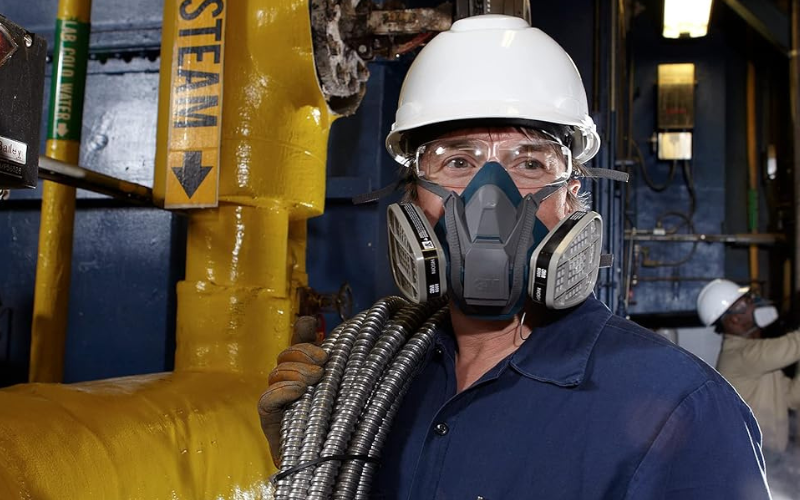
We recently had a customer who worked with a wide variety of materials and needed a mask and filters to cover everything. Let’s take a look:
I am working around many materials that I would like protection from. I am cutting hardened epoxy, fiberglass, wood, and plastic. I also do welding from time to time. I am also exposed to epoxies in the liquid state. Which mask and replaceable filters should I be using to protect me from these exposures? How long do the filters last? What size mask should I buy?
For working with the liquid epoxy, and cutting it after hardening, I recommend the 3M 60921 organic vapor cartridges. It has a layer of activated charcoal to absorb the vapors generated and a P100 (HEPA) filter to catch the particles. I would use this same combination when cutting the fiberglass and plastic.
For the woodworking and welding I would recommend the 3M 2097 particulate filters. This P100 rated filter will catch the smallest particles as well as the metal fumes generated during welding. A thin layer of charcoal absorbs nuisance vapors and the ozone from arc type welding.
You can interchange the recommended filters and cartridges on the same half mask respirator. The 3M 6000 half face piece mask is our top selling half mask and is more economy minded in terms of price. If you are looking for a more comfortable respirator, I would go with the 3M 7500 half face piece mask. All of these filters, cartridges and masks are available on our site, and are in stock.
Unfortunately there is no set time for filter or cartridge life. It depends very much on the concentration of the particles being breathed. Filters should be easy to breathe through when new. As they get used, particles accumulate on the filter, and the breathing resistance increases. It gets to a point where it is hard to breathe through, and then it is time to change. The happy side of this is that the filters are getting more efficient as they get loaded up with dust, but there is a practical limit to this.
For cartridges, they absorb vapors like a sponge. When new, you should not smell or taste the solvent. This means that once they have absorbed all they can, you get breakthrough, meaning you will smell or taste the solvent. Then it is time to change. It should also be noted that when the concentration of vapors exceeds the capacity of the cartridge to take in vapors, the cartridge can be overwhelmed (temporarily) and you again get breakthrough.
The mask sizing goes like this; about 80% of our customers buy medium size. If your face is quite small (thinking petite woman), then choose small. For large, the face will be noticeably large, or have an unusually prominent nose (for instance). Fit testing is really the only sure way to tell. Unfortunately there are no real measurements you can follow.
As always feel free to contact us with questions specific to your task!
Photo credit: 3M
Related Searches
Types Of Respirator Cartridges, Respirator For Fiberglass, Best Automotive Paint Respirator, How Often To Change Respirator Filters, P100 Filter
